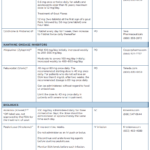In his discussion of the study, Dr. Pillinger noted that some potential confounders of the results include a high dropout rate (i.e., about 50% in each intervention arm) and the findings that most adverse events were captured among dropouts—that is after they were off medication—and that 85% of deaths occurred in patients when they were not receiving study drugs. Moreover, in subgroup analysis, no difference in mortality between the febuxostat and allopurinol arms was found when looking at patients on aspirin and patients who were not taking non-steroidal anti-inflammatory drugs.
With a more recent study from The Lancet showing non-inferiority in non-fatal myocardial infarction, acute coronary syndrome, non-fatal stroke and cardiovascular death in patients treated with febuxostat vs. allopurinol, the question of how to regard cardiovascular risk with febuxostat remains unanswered.4
Comparisons between febuxostat and allopurinol are relevant because it remains unclear which urate-lowering therapy is more effective for most patients. In addition, using allopurinol as part of a treat-to-target strategy may be a slow process to achieve goal serum uric acid levels, especially in patients with chronic kidney disease in whom titration of allopurinol must be performed even more slowly and cautiously than usual.
Allopurinol can be associated with several rare, but severe, adverse events, including allopurinol hypersensitivity syndrome, with possible Stevens-Johnson syndrome, bone marrow and renal failure, and death. Positivity for the HLA-B*5801 allele confers a 150–500-fold increased risk of allopurinol hypersensitivity syndrome, and given the increased presence of this allele in patients of certain ethnicities (including Han Chinese, Thai and African American), testing for the allele is conditionally recommended in these patients prior to starting allopurinol.1
Dr. Pillinger ended his lecture by discussing pegloticase, a recombinant porcine-like uricase that providers can use for patients who have failed urate-lowering therapy or have severe disease, particularly chronic tophaceous gout. This medication is becoming more widely used in select patients, and several studies have looked at combining pegloticase with immunosuppressants, such as azathioprine, methotrexate and mycophenolate mofetil, to improve tolerance and prevent formation of anti-drug antibodies that often require terminating therapy.
In Sum
The presentation by Dr. Pillinger was comprehensive and helpful, and the audience walked away with a better appreciation of the clinical pearls that apply to this age-old disease.
Jason Liebowitz, MD, completed his fellowship in rheumatology at Johns Hopkins University in Baltimore, Md., where he also earned his medical degree. He is currently in practice with Skylands Medical Group in New Jersey.
References
- FitzGerald JD, Dalbeth N, Mikuls T, et al. 2020 American College of Rheumatology Guideline for the Management of Gout. Arthritis Rheumatol. 2020 Jun;72(6):879–895.
- Saag KG, Puja KP, Keenan RT, et al. A randomized, phase II study evaluating the efficacy and safety of anakinra in the treatment of gout flares. Arthritis Rheumatol. 2021 Aug;73(8):1533–1542.
- White WB, Saag KG, Becker MA, et al. Cardiovascular safety of febuxostat or allopurinol in patients with gout. N Engl J Med. 2018 Mar 29;378(13):1200–1210.
- Mackenzie IS, Ford I, Nuki G, et al. Long-term cardiovascular safety of febuxostat compared with allopurinol in patients with gout (FAST): A multicentre, prospective, randomised, open-label, non-inferiority trial. Lancet. 2020 Nov 28;396(10264):1745–1757.


